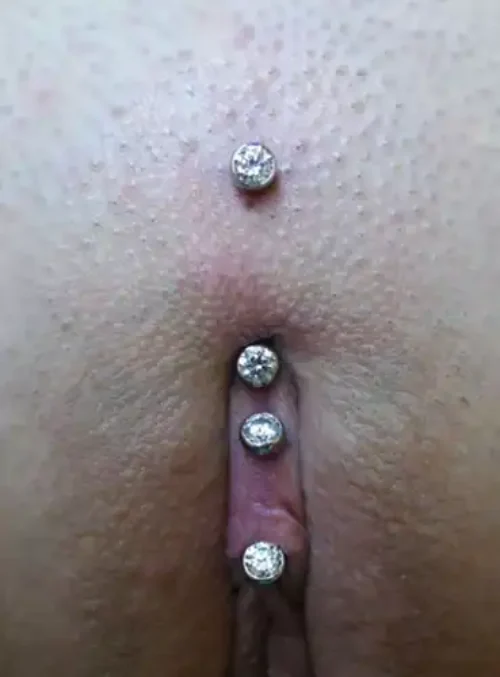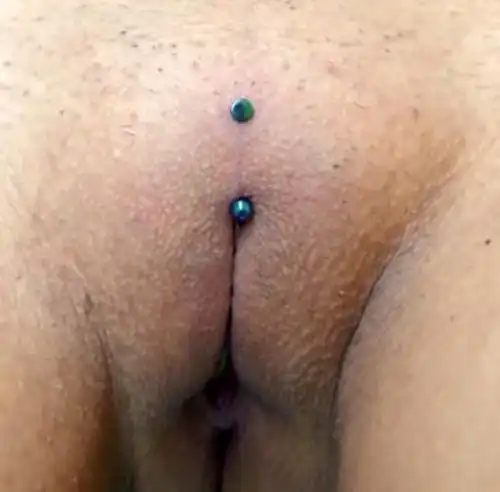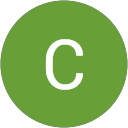Christina Piercing in Nairobi, Kenya
A Christina piercing is a type of female genital piercing that is located at the top of the vulva, where the outer labia meet. It is a surface piercing that goes through the mons pubis and is named after the first person who had it done. Here’s some information about Christina piercings:

Christina Piercing
Placement and Procedure
- Location: The piercing is placed vertically at the top of the vulva, just above the clitoral hood, through the pubic mound.
- Jewelry: Typically, a curved barbell or surface bar is used, as these accommodate the natural curve of the mons pubis and reduce the risk of rejection and irritation.
Christina Piercing Procedure
The Christina piercing procedure involves several steps to ensure it is performed safely and correctly. Here’s a detailed overview of what to expect:
- Preparation
– Consultation: Before the procedure, you’ll have a consultation with one of our piercer. Our piercer will discuss your medical history, check your anatomy to ensure you’re a suitable candidate, and explain the procedure and aftercare requirements.
– Consent: You’ll be asked to sign a consent form acknowledging the risks and your understanding of the procedure. - Procedure
– Sterilization: Our piercer will begin by thoroughly cleaning and sterilizing the genital area to prevent infection.
– Marking: Our piercer will mark the entry and exit points of the piercing with a surgical marker. This step is crucial for ensuring proper alignment.
– Positioning: You will be asked to lie down comfortably on a sterilized piercing table.
(Clamping: Some of our piercers may use a clamp to hold the skin in place and reduce discomfort, although this can vary.)
– Piercing: Using a sterile, single-use needle, our piercer will create the hole for the jewelry. The needle is inserted through the marked entry and exit points.
– Jewelry Insertion: After the needle, our piercer will insert the chosen jewelry (typically a curved barbell or surface bar) into the new piercing.
– Cleaning: The area will be cleaned again to remove any blood and ensure the piercing is free from contaminants. - Aftercare Instructions
– Cleaning: Clean the piercing twice daily with a saline solution or a mild, fragrance-free soap. Avoid harsh chemicals and excessive touching.
– Avoiding Irritation: Wear loose-fitting clothing to minimize friction and avoid activities that may irritate the piercing, such as sexual activity and rigorous exercise, during the initial healing period.
– Monitoring: Keep an eye out for signs of infection, such as excessive redness, swelling, pain, or discharge. If any of these symptoms occur, contact your piercer or a healthcare professional. - Healing Process
– Initial Healing: The first few weeks are crucial. The piercing may be tender and swollen initially.
– Long-Term Healing: Full healing can take 6 months to a year. Be patient and follow aftercare instructions diligently to avoid complications. - Risks and Considerations
– Infection: Always follow aftercare instructions to minimize the risk of infection.
– Rejection and Migration: Due to the surface nature of the Christina piercing, there is a higher risk of rejection and migration.
– Scarring: There is a possibility of scarring if the piercing does not heal properly or is rejected. - Choosing a Professional Piercer
– Ensure your piercer is experienced, especially with genital piercings.
– Check the cleanliness and hygiene standards of the piercing studio.
– Ask to see a portfolio of their previous work and read reviews or testimonials from other clients.
By understanding the procedure and committing to proper aftercare, you can increase the chances of a successful and healthy Christina piercing.
Considerations before getting a Christina Piercing
Getting a Christina piercing involves various considerations to ensure it’s the right choice for you and that the process goes smoothly. Here are some key points to think about before deciding to get a Christina piercing:
- Anatomy Suitability
– Individual Anatomy: Not everyone is anatomically suited for a Christina piercing. The success of this piercing depends on having enough tissue at the mons pubis for the piercing to anchor properly. At Rebel Inks Tattoos, Tattoo Removal, and Body Piercings Parlour we have experienced piercers to assess if your anatomy is suitable. - Pain Tolerance
– Pain Level: Christina piercings can be moderately painful due to the thickness of the tissue. Consider your pain tolerance and whether you’re comfortable with the discomfort involved during and after the procedure. - Healing Time and Aftercare
– Healing Duration: Christina piercings have a long healing time, typically between 6 months to a year. Be prepared for a lengthy healing process that requires diligent aftercare.
– Aftercare Commitment: Proper aftercare is crucial to prevent infection and promote healing. This includes cleaning the piercing twice daily with a saline solution and avoiding activities that may irritate the piercing. - Lifestyle Impact
– Activity Restrictions: During the healing period, you’ll need to avoid certain activities that could disrupt the piercing, such as rigorous exercise, sexual activity, and wearing tight clothing.
– Daily Routine: Consider how the piercing might affect your daily life and activities. Ensure you can accommodate the care and attention needed during the healing process. - Risk of Complications
– Infection: As with any piercing, there’s a risk of infection if proper aftercare isn’t followed. Be vigilant about cleaning and monitoring the piercing site.
– Rejection and Migration: Surface piercings like the Christina piercing are more prone to rejection and migration. Be aware that your body may push the jewelry out over time.
– Scarring: There is a possibility of scarring if the piercing is rejected or removed. Consider if you’re comfortable with potential scars in this area. - Jewelry Considerations
– Jewelry Choice: The initial jewelry will typically be a curved barbell or surface bar to accommodate the area’s shape. Ensure you’re comfortable with the type of jewelry used and understand how to care for it.
– Jewelry Quality: Choose high-quality jewelry made from materials such as surgical steel, titanium, or niobium to minimize the risk of allergic reactions and promote better healing. - Choosing the Right Piercer
– Experience and Expertise: At Rebel Inks Tattoos, Tattoo Removal, and Body Piercings Parlour we have a team of professional piercers with extensive experience in genital piercings.
– Hygiene Standards: Ensure the piercing studio adheres to strict hygiene and sterilization protocols to reduce the risk of infection. - Personal Comfort and Confidence
– Personal Decision: Make sure this decision is personally meaningful and not influenced by external pressures.
– Comfort Level: Ensure you feel comfortable with the piercer and the environment of the piercing studio. Confidence in your piercer can significantly impact your overall experience.
By thoroughly considering these factors, you can make an informed decision about getting a Christina piercing and ensure you’re prepared for the process and aftercare involved.
Pain and Healing of a Christina Piercing
Pain Level
- During the Procedure:
– Moderate Pain: Most people report that the pain during the piercing procedure is moderate. The area has a substantial amount of tissue, which can make the piercing feel more intense compared to other, thinner areas.
– Quick Process: The piercing itself is quick, lasting only a few seconds, but you might feel a sharp pinch and pressure. - After the Procedure:
– Initial Soreness: After the piercing, it’s common to experience soreness, swelling, and tenderness in the area. This can last for several days to a week.
– Discomfort: Some discomfort is to be expected during the initial healing period, especially when moving or if the area experiences friction from clothing.
Healing Process
- Initial Healing (First Few Weeks):
– Swelling and Redness: The piercing site will be swollen and red initially. This is a normal part of the healing process.
– Daily Cleaning: Clean the piercing twice daily with a saline solution or a mild, fragrance-free soap. Avoid using alcohol or hydrogen peroxide, as these can be too harsh and delay healing. - Ongoing Healing (Months 1-6):
– Reduced Swelling: Swelling and redness should gradually decrease after the first few weeks.
– Formation of Fistula: The body will start forming a fistula (a tunnel of healed tissue) around the jewelry. This process can take several months.
– Avoid Irritation: Wear loose-fitting clothing and avoid activities that put pressure or friction on the piercing. - Full Healing (6 Months to 1 Year):
– Complete Healing: Full healing can take up to a year. During this time, it’s crucial to continue with proper aftercare and avoid changing the jewelry prematurely.
– Check-ups: Periodic visits to your piercer can help monitor the healing process and address any concerns.
Christina Piercing Aftercare
Proper aftercare is essential to ensure the successful healing of a Christina piercing and to minimize the risk of complications such as infection, rejection, or scarring. Here are detailed aftercare instructions for a Christina piercing:
Cleaning Routine
- Saline Solution Soaks:
– Frequency: Clean the piercing twice daily.
– Preparation: Use a pre-made saline solution or make your own by dissolving 1/4 teaspoon of non-iodized sea salt in 200 millilitres of warm distilled water.
– Application: Soak a clean cotton pad or gauze in the saline solution and gently apply it to the piercing site for a few minutes. You can also use a saline spray for convenience. - Mild Soap:
– Type: Use a mild, fragrance-free soap.
– Frequency: Once a day, during your shower.
– Method: Gently lather around the piercing with clean hands, then thoroughly rinse with warm water to ensure no soap residue remains.
Hygiene Practices
- Hand Washing:
– Before Touching: Always wash your hands thoroughly with antibacterial soap before touching your piercing or performing any cleaning. - Avoiding Contaminants:
– No Twisting or Turning: Do not twist or turn the jewelry, as this can introduce bacteria and disrupt the healing process.
– Avoiding Makeup and Lotions: Keep makeup, lotions, and other body care products away from the piercing site.
Clothing and Activity Considerations
- Clothing:
Loose-Fitting Clothing: Wear loose, breathable clothing to minimize friction and irritation. Avoid tight pants, underwear, and fabrics that can rub against the piercing. - Sexual Activity:
– Abstinence: Avoid sexual activity that involves the piercing site for at least the first few weeks to prevent irritation and the introduction of bacteria.
– Protection: Once sexual activity resumes, use barrier methods such as condoms to reduce the risk of infection.
General Tips
- Avoid Submersion:
– Water Bodies: Refrain from submerging the piercing in pools, hot tubs, lakes, or any body of water that might contain bacteria until it is fully healed. - Healthy Lifestyle:
– Diet and Hydration: Maintain a healthy diet and stay hydrated to support the healing process.
– Avoid Smoking and Alcohol: Minimize smoking and alcohol consumption, as they can impair healing.
Monitoring for Complications
- Infection Signs:
– Symptoms: Look for signs of infection such as increased redness, swelling, warmth, pain, or discharge that is yellow or green in color.
– Action: If you notice any of these symptoms, seek advice from your piercer or a healthcare professional promptly. - Rejection and Migration:
– Observation: Monitor the piercing for signs of rejection, such as the jewelry moving closer to the surface, increased visibility of the jewelry, or thinning of the tissue.
– Consultation: Contact our piercer if you suspect rejection or migration for an evaluation and possible adjustment. - Scarring:
– Minimizing Scars: Proper aftercare and avoiding premature removal of the jewelry can help minimize scarring. If you remove the jewelry, continue cleaning the area until it heals completely.
Follow-Up Care
- Check-Ups:
– Piercer Visits: Schedule periodic visits with our piercer for check-ups, especially if you experience any issues or have concerns about the healing process.
– Jewelry Changes: Do not change the jewelry until the piercing is fully healed, typically after 6 months to a year. At Rebel Inks Tattoos, Tattoo Removal, and Body Piercings Parlour we have professional piercers to assist with the first jewelry change.
By adhering to these aftercare instructions, you can support the healing process of your Christina piercing and reduce the risk of complications. Always consult with our professional piercer if you have any questions or concerns during the healing period.
Christina Piercing Jewelry
Choosing the right jewelry for a Christina piercing is crucial for comfort, healing, and overall aesthetics. Here are the key points to consider when selecting and caring for Christina piercing jewelry:
Types of Jewelry
- Curved Barbell
Description: A barbell with a slight curve that fits the natural contour of the piercing site.
Benefits: Reduces pressure and irritation on the piercing compared to straight barbells. - Surface Bar
Description: A specially designed bar with 90-degree angles on both ends.
Benefits: Sits more comfortably and flush against the skin, minimizing the risk of rejection.
Materials
- Titanium
– Properties: Hypoallergenic, lightweight, and durable.
– Benefits: Ideal for those with sensitive skin or metal allergies. Promotes faster healing due to its biocompatibility. - Surgical Stainless Steel
– Properties: Commonly used, durable, and affordable.
– Benefits: Suitable for most people, though not as hypoallergenic as titanium. - Niobium
– Properties: Hypoallergenic and flexible.
– Benefits: Another good option for sensitive skin, though less commonly used than titanium. - Gold (14k or higher)
– Properties: Luxurious and non-reactive.
– Benefits: Provides a premium option, but ensure it’s solid gold and not gold-plated to avoid irritation.
Sizing
- Gauge: Typically, a 14-gauge (1.6 mm) or 16-gauge (1.2 mm) is used. The gauge refers to the thickness of the jewelry.
- Length: The length of the jewelry will depend on individual anatomy. It’s crucial that the jewelry fits well to avoid excessive movement or pressure.
Initial Jewelry
- Fit: The initial jewelry should be slightly longer to accommodate swelling during the healing process.
- Professional Insertion: At Rebel Inks Tattoos, Tattoo Removal, and Body Piercings Parlour we have a professional piercers who wil help choose and insert the initial jewelry to ensure proper fit and minimize complications.
Jewelry Care and Maintenance
- Cleaning: Clean the jewelry and the piercing site as part of your daily aftercare routine. Use a saline solution or mild, fragrance-free soap. Avoid harsh chemicals.
- Avoiding Irritation: Do not rotate or move the jewelry unnecessarily during the healing process. Minimize Friction: Wear loose-fitting clothing to reduce friction and pressure on the piercing.
- Jewelry Changes: Wait until the piercing is fully healed (6 months to a year) before changing the jewelry. Have a professional piercer change the jewelry for the first time to ensure proper handling and insertion.
Risks and Considerations
- Rejection and Migration:
– Signs: Watch for signs of rejection, such as the jewelry moving closer to the skin’s surface or the skin becoming thinner.
– Prevention: Choosing the right type and material of jewelry can help reduce the risk of rejection. - Infection:
– Prevention: Proper aftercare and high-quality jewelry materials are essential to prevent infections.
– Action: If signs of infection occur (redness, swelling, discharge), seek medical advice promptly.
Aesthetic Choices
- Design: Once fully healed, you can choose from a variety of decorative ends and designs to personalize your piercing.
- Matching: Consider jewelry that complements your other piercings or overall style.
By carefully selecting the right type, material, and size of jewelry, and following proper aftercare and maintenance, you can enhance the comfort and longevity of your Christina piercing. Always consult with our professional piercer for personalized recommendations and care instructions.
Cost of a Christina Piercing in Nairobi, Kenya
The cost of a Christina piercing can vary significantly based on several factors, including the location of the piercing studio, the experience and reputation of the piercer, and the type of jewelry used. Here are some details to consider:
Average Cost Breakdown
- Piercing Fee:
– Range: The fee for the piercing procedure itself typically ranges from ksh.5,000 to ksh.10,000.
– Influence: Prices may be higher in larger cities or more reputable studios due to higher overhead costs and demand for experienced piercers. Rebel Inks Tattoos, Tattoo Removal, and Body Piercings Parlour is located in the heart of the Central Business Disrict (CBD) in Nairobi, Kenya, and is easily accessible to both locals and foreigners in the country - Jewelry Cost:
– Initial Jewelry: High-quality jewelry is crucial for a Christina piercing. Expect to pay between Ksh. 1,500 and Ksh. 5,000 for the initial jewelry, depending on the material and design.
→Titanium or Surgical Stainless Steel: Generally costs between Ksh. 1,500 and Ksh. 20,000.
→Gold (14k or higher): Can range from Ksh. 10,000 to Ksh. 100,000 or more depending on grams.
– Upgraded Jewelry: Custom or decorative pieces for fully healed piercings can cost significantly more.
Additional Costs
- Consultation Fee: Some studios may charge a separate consultation fee, especially if a thorough anatomical assessment is needed. This fee is usually included in the piercing fee.
- Aftercare Products: You may need to purchase aftercare products like saline solution or mild soap, which can add to your initial cost.
- Follow-Up Visits: Follow-up appointments are generally included in the initial fee, but if you need additional visits, there might be extra charges.
Factors Influencing Cost
- Location:
– Urban vs. Rural: Piercing studios in urban areas tend to charge more due to higher rent and operating costs.
– Regional Differences: Prices can vary significantly from one region to another. - Piercer’s Experience and Reputation:
– Expertise: Highly experienced piercers with a good reputation may charge more, but their expertise can ensure a safer procedure and better outcomes.
– Studio Reputation: Well-known studios with high hygiene standards and good customer reviews may also charge higher fees. - Jewelry Quality:
– Material: The type of material (e.g., titanium, surgical steel, gold) affects the price. Hypoallergenic materials like titanium are often more expensive but recommended for initial piercings.
– Design: Basic jewelry is less expensive, while custom or decorative pieces can significantly increase the cost.
Christina Piercing Cost Breakdown Table
Component / Service | Estimated Cost (KSh) | Details / Notes |
Procedure + basic surface barbell | 5,000 – 10,000 | Includes piercing and standard jewelry (titanium/steel) |
High-quality titanium or custom jewelry | 1,500 – 20,000 | For hypoallergenic, personalized, or decorative options |
Consultation (anatomy assessment) & aftercare | Included or 500 | Some studios include; others charge separately for personalized service |
Follow-up / revision visits (for irritation/rejection) | Up to 2,000 | Surface piercings may need monitoring and early intervention |
Total Estimated Cost
Taking all factors into account, you can expect the total cost for a Christina piercing to range from Ksh. 5,000 to Ksh. 20,000 or more, including the procedure and initial jewelry.
Tips for Cost Management
- Research Studios: Look for reputable studios with experienced piercers. Sometimes, paying a bit more for quality and expertise is worth it.
- Ask for Breakdown: At Rebel Inks Tattoos, Tattoo Removal, and Body Piercings Parlour we give a detailed cost breakdown during your consultation so you know exactly what you’re paying for.
- Avoid Bargain Hunting: Don’t choose a studio solely based on the lowest price. Quality, hygiene, and expertise are crucial for a safe piercing and smooth healing process.
- Check Reviews: Read customer reviews and ask for recommendations to find a studio with a good reputation for Christina piercings.
By considering these factors and planning accordingly, you can budget effectively for your Christina piercing and ensure a safe and satisfactory experience.

Possible side effects of Christina Piercing
Like any body modification, a Christina piercing comes with potential side effects and risks. Being aware of these can help you make an informed decision and prepare for proper aftercare. Here are some possible side effects and complications:
Common Side Effects
- Pain and Swelling
– Initial Discomfort: Pain and swelling are common immediately after the procedure and can last for several days to a week.
– Management: Over-the-counter pain relievers and applying a cold compress can help manage these symptoms. - Redness and Tenderness
– Healing Process: The area around the piercing may remain red and tender during the initial healing phase.
– Normal Reaction: This is a normal response to the piercing and should gradually subside as healing progresses.
Potential Complications
- Infection
– Signs: Increased redness, swelling, warmth, pain, and discharge (especially yellow or green pus) are indicators of infection.
– Prevention: Maintain strict hygiene and follow aftercare instructions. Seek medical attention if infection is suspected. - Rejection and Migration
– Symptoms: The body may push the jewelry towards the surface, causing the piercing to migrate or reject completely.
– Factors: Incorrect jewelry size, poor placement, or individual skin reactions can contribute to this.
– Action: Consult our piercer if you notice the jewelry moving or the skin thinning around the piercing. - Scarring
– Types: Hypertrophic scars or keloids can form if the piercing is not cared for properly or if it rejects.
– Minimization: Proper aftercare and avoiding unnecessary trauma to the piercing can reduce the risk of scarring. - Allergic Reactions
– Materials: Allergic reactions can occur if the jewelry is made of materials that your body reacts to, such as nickel.
– Prevention: Use hypoallergenic materials like titanium, niobium, or high-quality gold (14k or higher). - Bleeding
– Initial Bleeding: Some bleeding is normal immediately after the piercing.
– Prolonged Bleeding: Excessive or prolonged bleeding may indicate a problem. Consult our piercer if this occurs.
Long-Term Considerations
- Discomfort and Irritation
– Movement and Friction: Daily activities, clothing, and sexual activity can cause irritation and discomfort during the healing process.
– Management: Wear loose-fitting clothing and be mindful of activities that could impact the piercing site. - Sensitivity Changes
– Nerve Damage: Though rare, improper piercing technique can potentially damage nerves, leading to altered sensation.
– Prevention: Ensure the piercing is done by a qualified and experienced professional. - Impact on Sexual Activity
– Healing Period: Sexual activity should be avoided during the initial healing period to prevent irritation and infection.
– Long-Term: Some people may experience changes in sensation or discomfort during sexual activity even after healing.
Care and Management
- Follow Aftercare Instructions
– Cleaning: Clean the piercing twice daily with a saline solution or mild, fragrance-free soap.
– Hygiene: Avoid touching the piercing with unwashed hands and keep the area dry and clean. - Monitor for Complications
– Regular Check-ups: Visit your piercer for regular check-ups to ensure proper healing.
– Prompt Action: Address any signs of complications early to prevent more severe issues. - Jewelry Care
– Material Choice: Opt for high-quality, hypoallergenic jewelry.
– Jewelry Changes: Do not change the jewelry until the piercing is fully healed (6 months to a year), and have a professional assist with the first change.
By understanding the possible side effects and taking appropriate measures, you can better manage your Christina piercing and enjoy the benefits of this unique body modification.
Related Piercing
Get In Touch
For more information on the list above and any other special services,please call or come in for free consultation
Testimonials
I am extremely happy with my new 'Safari' tattoo from Eric at Rebel Inks! The quality of the artwork is fantastic. Eric is a true professional and an amazing artist.
The preparation and design process was thorough and collaborative. He was very patient with my specific requests, including making sure all the elements, which hold personal meaning, were perfect.
The service was friendly and highly professional from start to finish. Despite the 8-hour session, Eric was a pleasant person to spend the time with.
The aftercare guidance and follow-up have been excellent and careful, which has made the healing process easy and better than expected.
I highly recommend Eric for anyone looking for a thoughtful, talented, and caring tattoo artist.
I recommend them 💯
I would definitely recommend if you’re thinking of getting a piercing!
The staff were super friendly, explained everything clearly, and made me feel so at ease. They answered all my nervous questions (and I had many questions),
They walked me through the whole process, gave detailed aftercare instructions, and even followed up afterward to check how I was healing 🫶
Clean, professional, and full of good vibes.
Would 100% recommend . Definitely making a second trip here.
This was the second tattoo I got and I wish I could have come to Eric for my first one! He gave me really great after-care directions for the tattoo as well as a little jar of his own Vaseline-type stuff to put over my tattoo while it was healing! He even put second skin over my tattoo so that I didn’t have to worry about it for the first few days. Now THAT’S good service. My first tattoo artist didn’t do none of that lol.
After the session Eric didn’t rush me and my friend out, he chatted with us and even when he found out I was an artist too— really encouraged me to keep creating and to find a community of artists to support me. I almost cried because I’ve had such a hard time with my own art the past couple of years, it meant so much to me to have a fellow very talented artist say that to me. 🤍🤍🤍
Eric you’re amazing, don’t ever stop creating and just know you’ve impacted lives all over the world!🫶🏻 thanks so much for everything!!
From the moment I walked in, Eric was professional, welcoming, and attentive. He made sure I was comfortable throughout, provided everything I needed, and explained every step of the process. The tattooing itself was unbelievably smooth - I genuinely felt no pain compared to my previous tattoos over the last 22 years.
Eric also gave me excellent aftercare guidance and products, and thanks to that, my tattoo healed beautifully. The attention to detail, precision, and shading are absolutely stunning. This is hands-down the best tattoo I've ever had, and I will be flying back to Nairobi for any future ink.
If you want incredible art, a professional experience, and a talented artist who truly cares about his clients, Rebel Ink is the place to go!
From start to finish, the service was exceptional. The piercer was professional, knowledgeable, and made me feel completely comfortable. The cleanliness of the place was above and beyond — everything was spotless and hygienic, which really put me at ease. Highly recommend for anyone considering a piercing!
Shout out to Eric😘
We ended up changing the jewelry three times to ensure I had the best fit and avoided any signs of rejection, and he always listened to my suggestions as a client, which I really appreciated. Now, three months in, my piercing is healing beautifully, with no sign of rejection. Highly recommend for anyone who values a piercer who cares about your comfort and healing journey!
What stood out the most was the aftercare Eric checked in with me even three weeks later to see how the tattoo was healing. That kind of follow-up shows how much he truly cares about his work and his clients.
I’m very satisfied and will definitely be coming back for my next piece. Highly recommend!
The piercing wasn't as painful as I had thought and the process was quick and satisfactory. I love it!!!
The piercing is healing well thanks to the aftercare instructions and follow-up. I would highly recommend Rebel Inks
Eric also did a belly button piercing for a friend, guiding her through the process, doing the piercing and then explaining the after care to her.
The shop is on the 3rd floor, with the entrance to the stairs near an alleyway on the left. The shop is perfect size, clean, and attractive looking. The mural is pretty dope.
Thank you for the amazing service! 🔥👅✨
I got piercibgs there and the process was really good. My biggest concern was hygiene but that wasn't an issue at all, they use new needles and they sanitize them.
The service itself was also welcoming.
I was informes of everything i needed to know beforehand.
10/10 would recommend!
Eric was so calm and patient with my almost 2 year old lady. It was such a clean and hygienic process. We will definitely be back for our second rounds of piercings and maybe even another tattoo!
They assess the area before any art and advise one accordingly. They also give one post clean up process and also do a check up after the body art projects. Overall, I loved my experience and I’m hooked. 👍
Will definitely come back next time I’m in town 🙂
He listened to what I actually wanted and made sure he could fit in the time before I flew back home.
The shop is clean & private and is easy enough to find.
Eric has even checked in a couple of times since to make sure all is good.
I would totally recommend Eric! I absolutely love my Elephants!
I had a very easy healing period and always follow up from Eric to check on my progress...I would highly recommend if you are a first timer because from my experience all went very well and attention to detail
Thank you for a good job and looking forward to send all my friends your way
And all the best with the new year 2025!
From the moment I walked in, the staff was super friendly and made me feel at ease. The studio had a clean, professional atmosphere, which immediately put me at ease. My piercer was incredibly skilled and explained every step of the process, ensuring I was comfortable the entire time. The piercing was quick and practically painless, and the aftercare instructions were clear and easy to follow. I can tell they really care about the health and safety of their clients.
Overall, a fantastic experience—I highly recommend Rebel Inks and Tattoos for anyone looking to get pierced or tattooed!
They do follow up after their services
Eric's Studio isn’t just a place to get a tattoo—it’s an experience. The combination of professionalism, artistic talent, and a welcoming environment makes it a standout destination for anyone considering a tattoo.
I highly recommend Eric’s Studio to both first-timers and seasoned tattoo enthusiasts. If you’re looking for a high-quality tattoo and an enjoyable experience, this is the place to go.
I would definitely recommend their services again and again
Thank you Rebel Ink
My piercings are healing ❤️🩹 well
I would 💯 recommend
I will definitely come back for more .
Two, all the equipments he used for the piercings were new and/or sterilised.
Three, the parlour itself was very clean and was up to par with the hygiene standards.
Four, Eric provided effective aftercare instructions, making sure I knew exactly how to take care of my new piercings and he kept in touch and continues to do so, to check on the healing progress.
I highly highly highly recommend this place!!!
Would definitely recommend them to friends and go back for other piercings
Not only was the piercing process smooth, but he also provided thorough aftercare instructions, making sure I knew exactly how to take care of my new piercings. What really impressed me was that he keeps in touch to check on how the healing is progressing – a sign of true care for his clients.
The shop maintains a high standard of hygiene, and the atmosphere is welcoming and comfortable, which really added to the positive experience. I highly recommend this place to anyone looking for a professional and caring experience. I’ll definitely be coming back for any future piercings!
My appreciation for the excellent customer service I received. The follow-ups were prompt, and I truly appreciated the gentleness and professionalism throughout. Thank you!"
"Looking for professional eyebrow microshading removal? Look no further!"
The customer care is top tier 👌🏾👌🏾.
Wonderful place to get tattoos and piercings. 💯💯
Eric goes ahead to follow up on his clients progress and gives good advice each time I reach out to him.
I would recommend Reble tattoos anytime.
Good job bro we really appreciate.
Ohh and the price is very fair.
The environment was clean , procedure was sterile and the jewelry used are of the best quality.
He followed up with me during the healing process, he educated me on what I needed to do for my aftercare.
Eric is confident, skilled , experienced and the best piercer. Highly recommend Rebel inks.✨
Definitely recommend!
Great experience.
Eric definitely know what he is doing .
I got exactly what I wanted 2 tiny tats on the same finger .
He was kind and patient throughout the session.
Healing process has been good .
Aftercare services were given and regular checkups on the healing process were done.
I would 💯recommend.
Eric gave me the best reception as it was my first time there,and made me trust him all the way. I appreciate good services.
There services are also affordable not to forget 😊.
He was also invested in the aftercare and would ensure I follow the do's and don'ts in taking care of the tattoo and ensuring proper healing and maximum ink retention.
Would highly recommend Rebel Inks Tattoos.
Rebel Inks Tattoo offer the best,affordable and quality tattoo removal services.If you have unwanted ink,choose Rebel Inks Tattoo,they're the best of the best and the professionalism is a top notch.They ensure you're free from unwanted ink with their Laser Tattoo Removal Technology...
I did a Laser Tattoo Removal with them and i can attest they're the best....
Kudos Eric...
I highly recommend.
It was a generally good experience with good hygiene during the piercing process and has been a smooth healing process.... 10/10
tips. Highly recommend 👍🏽
100% recommendable.
I was particularly impressed with Eric's attention to hygiene. He thoroughly cleaned the room before I entered, sanitized all of the equipment he would be using, and changed gloves between each ear. This level of cleanliness gave me great confidence in his professionalism.
Eric's commitment to customer service did not end on the day of the piercing. He followed up with me regularly throughout the healing process to ensure that I was following the aftercare instructions and that my earlobes were healing properly.
I highly recommend Rebel Inks to anyone in Nairobi who is considering getting a piercing. Eric is a highly skilled and experienced piercer who takes great pride in his work.
So I Check all the boxes below and more:
Customer Care: ✔️
Professionalism : ✔️
Cleanliness ✔️
Price: ✔️
After care service ✔️
Thanks and good job, Eric
The place is neat and clean and the equipments he used were also fine standards. Really appreciate his following up with me on the healing 🤗
I WOULD HIGHLY RECOMMEND THEIR SERVICES to everyone. Actually what you see on their website is EXACTLY what you will get. Keep up the good work Rebel inks Tattoos.
The infection is now gone. I would definitely recommend!
Can recommend this place totally and would go back there anytime!
Thanks!
OUR LOCATION
Areas We Serve
NAIROBI
KIAMBU
KAJIADO
MACHAKOS




































































































































































































































